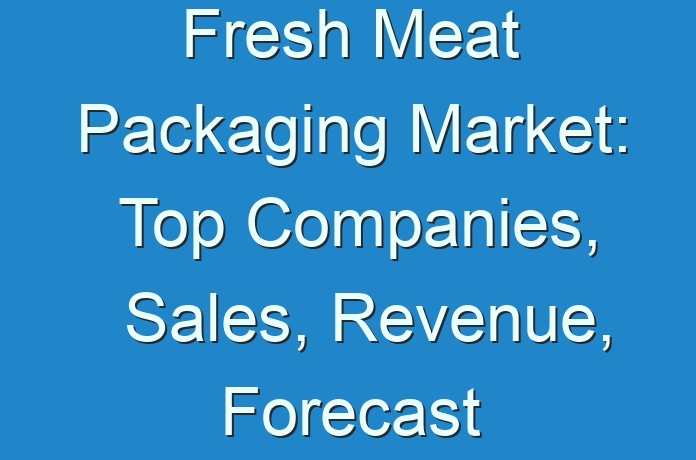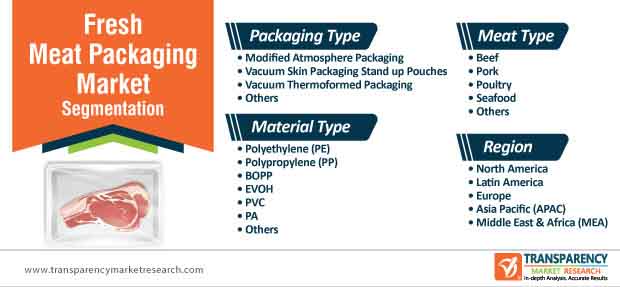
Packaging Companies Adhere to Good Food Safety Practices to Avoid COVID-19 Contamination
Since it is suspected that the novel coronavirus may have originated from animals, stakeholders have become more aware about maintaining the safety of meat. There is a high chance of transmission of COVID-19 from food and food packaging. Hence, companies in the fresh meat packaging market are educating their logistics partners and other stakeholders in the value chain to avoid cross contamination while packaging the meat.
Good food safety practices recommended by the World Health Organization (WHO) are being followed by companies in the fresh meat packaging market. Since COVID-19 has led to a dip in meat consumption, companies in the fresh meat packaging market are rethinking their online marketing and sales strategies to boost product uptake via eCommerce. Packaging companies are encouraging consumers to disinfect food packaging surfaces with household sanitizers to ensure safety.

Case-ready Packaging Maximizes Protection, Alleviates Demand Uncertainties
Amid health concerns surrounding the novel coronavirus, companies in the fresh meat packaging market are boosting their output capacities for case-ready packaging solutions. These solutions not only help to maximize protection of raw meat, but are also used to offset supply and demand uncertainties.
The fresh meat packaging market is predicted to climb a volume growth from ~924,165 tons in 2020 and surpass the volume of ~1,255,795 tons by 2028. High quality barrier technologies, such as vacuum sealing, barrier films, and modified temperatures are being used to ensure the freshness of raw meat. Packaging companies are witnessing a transition from fresh cutting and packaging operations to scaling of eCommerce pickups of perishable items.
To understand how our report can bring difference to your business strategy, Ask for a brochure
Bio-plastics, Molded Fibers Offer Compostable, Biodegradable Packaging Material
A balance between sustainability and performance is being met by companies in the fresh meat packaging market that are becoming aware about consumer concerns for polystyrene foam tray covered with plastic film. Packaging companies are incorporating more recycled materials in their solutions to achieve consumers’ sustainability goals. They are producing bio-plastics and molded fiber materials to meet performance requirements in packaging to keep the meat fresh for consumption.
The fresh meat packaging market is slated to register a volume CAGR of 4.3% during the forecast period. Bio-plastics and molded fibers are offering packaging that is compostable and biodegradable. Manufacturers are establishing continuous research in sustainable materials whilst overcoming challenges to contain moisture and prevent the meat from sticking to packaging.
Get More Press Releases by TMR: prnewswire.com/news-releases/plastic-corrugated-packaging-market-expands-scope-of-businesses-in-ecommerce-industry-to-deliver-sustainable-packaging-solutions-tmr-301200091.htmll
Eco-friendly Individual Packets Enable Perfectly Portioned Servings of Seafood
Companies in the fresh meat packaging market are increasing efforts to draw design innovations in seafood packaging. They are boosting their production capabilities in eco-friendly individual packets that are perfectly portioned servings. In order to make seafood products approachable, companies should improve their design capabilities to ensure food safety and freshness of the product.





